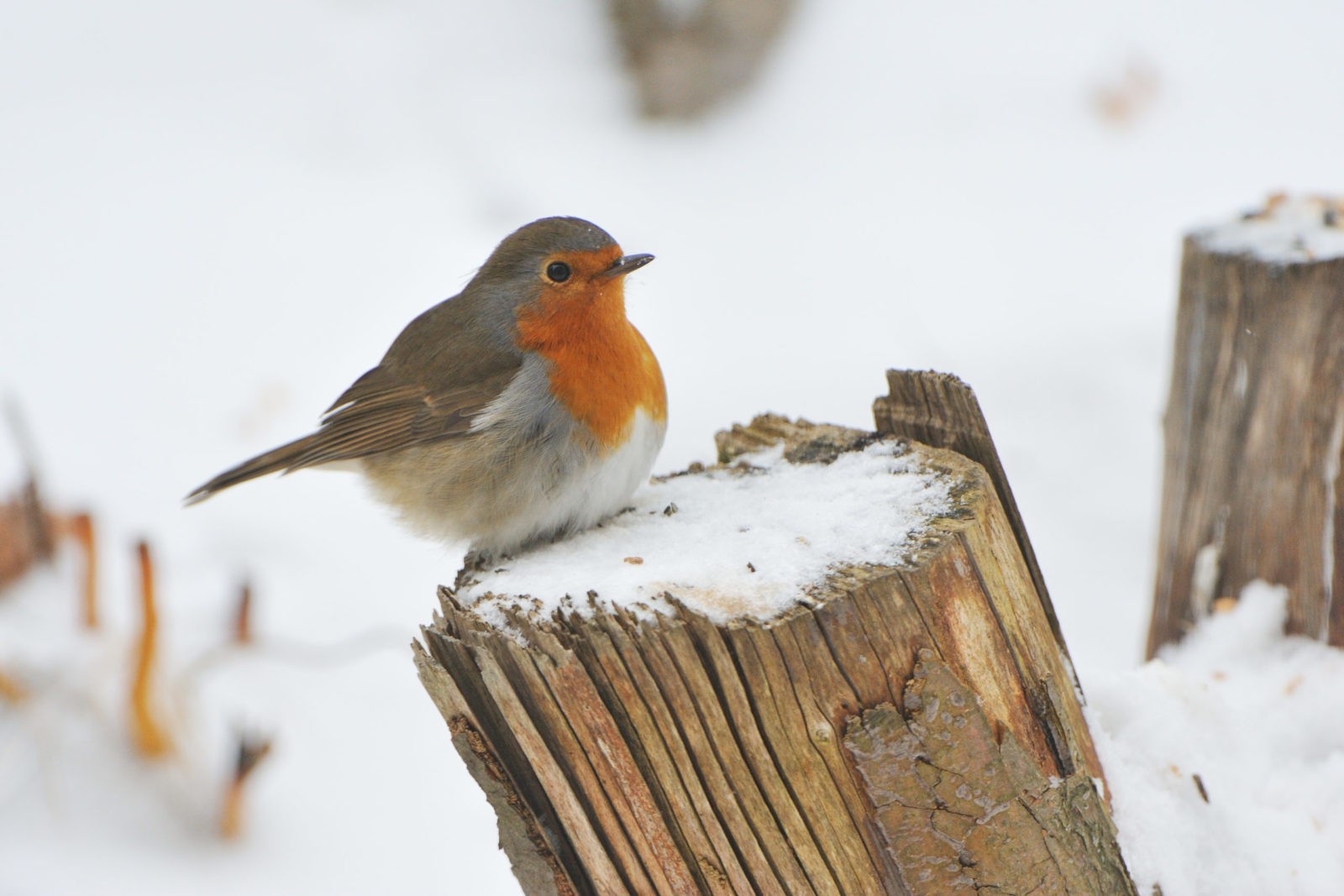Many of our native songbirds are migratory. Nightingales and redstarts, for example, disappear to warmer climes at the onset of winter. Others stay here. The robin has even made it into the classic Christmas motif on the British Isles. "Robin" is almost as emblematic of Christmas there as St. Nicholas is here.
Like other songbirds that spend the winter in our country, the robin likes to come to feeding stations in gardens and around houses. Watching the birds at the feeder is fun and also brings city dwellers a little closer to local nature. "You only protect what you know!". Bird food of all kinds can be bought in all supermarkets and garden shops. So is winter feeding a good thing all round?
A few tips should be followed in order not to do more harm than good.
Above all, the feed must be offered as clean and dry as possible. Feeding silos in which the food slides down and cannot get dirty are therefore particularly suitable. Open feeders, where the birds can run around, get dirty more quickly. Like the classic bird feeder, they should be roofed and, for hygienic reasons, emptied and cleaned daily. So it is better to feed small portions!
Tits, finches, sparrows and other grain-eaters love sunflower seeds and nuts, which they also peck almost artistically from bells and cups. By the way, did you know that the blue tits that breed with us in summer migrate further south in autumn? The blue tits we feed in winter are their Scandinavian relatives who flee from the Nordic winter to our warmer regions.
Please do not offer titmouse dumplings in plastic netting, but without netting in reusable wire baskets or similar. The birds can get caught in the plastic net and the empty nets do not rot. If you pour your own titmouse food, it is best to use beef tallow or coconut oil. Both harden sufficiently and are readily eaten.
For the "soft feeders" like robins and co, food made of cereals, flakes, insects and sultanas is suitable. Fruit or seeds rolled in fat are also popular. Good feed mixes contain these ingredients. The same applies to bird food: it is better to offer less, but high-quality food.
For blackbirds, robins, hedge hawks and wrens, feeding stations near the ground are also good - but make sure they are in an open place so that cats cannot sneak up on them unnoticed.
Feed in winter and enjoy the pretty guests at the feeder, but: winter feeding is not a conservation measure! A flower-rich garden (or balcony box) without pesticides and with lots of wild herbs that form seeds and attract insects serve the native birds best.
Like other native songbirds, the robin likes to come to feeders in the garden and on the balcony. Watching the birds at the feeder is fun and also brings city dwellers a little closer to native nature.
There are a few tips to keep in mind in order not to do more harm than good:
Above all, the feed must be offered clean and dry. Feeding silos in which the food slides down and cannot get dirty are particularly suitable. Open feeders, where the birds can walk around, should be covered like the classic bird feeder and emptied and cleaned regularly for hygienic reasons. So it is better to feed small portions!
Grain-eaters love sunflower seeds and nuts, which titmice in particular pick almost artistically from bells and cups. Please do not hang titmouse dumplings in plastic netting. The birds can get caught in the plastic netting and the empty nets do not rot. Wire baskets or similar are better.
For the "soft feeders" such as robins and co, (fat) food made of seeds, flakes, fruit and insects is suitable. Good food mixtures contain these ingredients. Feed in winter and enjoy the pretty guests at the feeding place, but: winter feeding is not a nature conservation measure! A flower-rich garden (or balcony box) without pesticides and with many wild herbs that form seeds and attract insects serve the native birds best.

